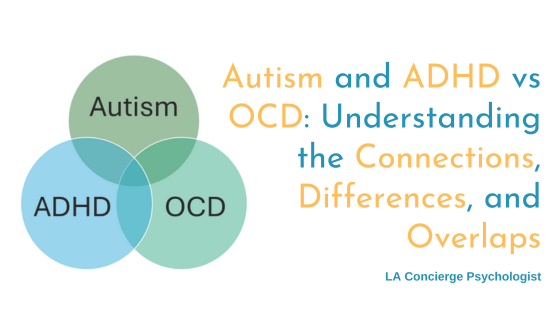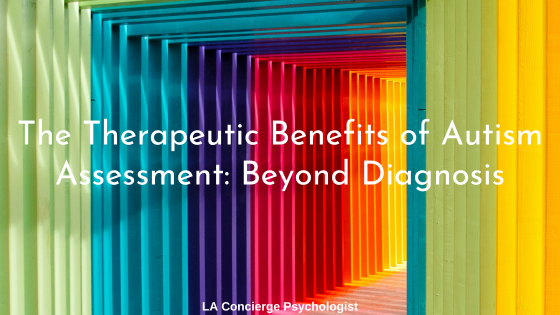Autism is often associated with communication problems in adults. According to the Diagnostic and Statistical Manual for Mental Disorders (DSM-5), autistic people have “deficits in social communication and social interaction.” It’s true that autistic people often struggle to communicate effectively with neurotypical people. Unfortunately, many people jump to the conclusion that autistic people are to blame for this problem.
If you’re autistic, you are probably familiar with this line of thinking. During childhood, your parents, teachers, and other authority figures might have labeled you as “antisocial” or told you your communication style was incorrect, rude, or inappropriate. They might also have insisted you adopt neurotypical ways of communicating.
As a result, you may have internalized the view that you’re a poor communicator, especially if you feel socially anxious or awkward. To alleviate your supposed “deficits,” you may be looking for information on how to improve your communication skills in autism forums and other resources.
Autistic communication is not “deficient”—just different
As autism specialists, we think it’s unfair to blame the autistic-neurotypical communication gap on autistic people. Research shows that autistic people are just as expressive as neurotypical people and can understand each other perfectly well.[1],[2] Autistic people are not deficient in communication skills. They simply communicate differently than neurotypical people do.
When autistic and neurotypical people interact, they often have trouble understanding, empathizing with, and being understood by each other. Neurodiversity-affirmative psychotherapists call this the double empathy problem. According to the double empathy framework, the autistic-neurotypical communication gap is a mutual problem which both groups share responsibility for solving.
Bridging the gap
Expecting autistic people to use neurotypical communication styles 100% of the time is unfair and unrealistic. Most autistic people don’t have the energy or internal resources to maintain neurotypical communication styles (a part of masking or camouflaging), putting them at risk for autistic burnout. This expectation can also lead to internalized ableism.
A fairer and more effective way for autistic and neurotypical people to bridge the communication gap between them is to meet each other halfway. During conversations, both sides can reduce misunderstandings by avoiding assumptions and asking lots of questions. It’s also essential that communication partners learn each other’s unique “language.” When you understand how autism affects communication, you can find communication strategies that work for both neurotypical and autistic adults.
How autism can affect communication traits and values
Every individual communicates uniquely, but autistic people usually have a lot in common regarding how they interact. Below, we outline common autistic communication traits and describe how autism can affect communication with neurotypical people. As you’ll see, autistic communication traits are not inferior to neurotypical ones. It’s just that they don’t always line up with neurotypical ones.
Many of our autistic clients tell us that they communicate more directly and honestly than others do. They also report differences in the timing/duration of their communications and their reliance on non-verbal signals. If you are a neurotypical person wondering how autism can affect communication, the differences described below are a good starting point. If you are autistic, the following information may help you to learn more about yourself by identifying which communication traits/values resonate with you.
Autistic and neurotypical people often differ in terms of the following traits and values:
Directness
Many autistic people prefer to avoid implications, hints, and assumptions because they find them challenging to interpret. Neurotypical people, in contrast, often rely on them to avoid vulnerability and prevent hurt feelings.
Imagine a scenario where Julio—an autistic person—and Jane—a neurotypical person—are on a first date at a restaurant. It’s going well. After dinner, Jane asks Julio what he’s doing afterward. Julio says he’s going home to watch his favorite show. Jane remarks that she loves that show, too. Her plans for the evening are much less fun, she says.
Jane is hinting that she would like to join Julio for show-watching, but Julio misses these signals and thinks the date is over. He provide some suggestions on what Jane can do to have more fun at home, says goodnight, and goes home alone. Jane is disappointed that she wasn’t invited over. She assumes Julio must not be that into her. Little does she know that if she would have asked Julio directly if she could join him, he would have happily invited her. Julio thought he was being helpful by giving her suggestions on how to have a more fun evening after their date was over.
Communicating with autistic adults can feel abrasive to neurotypical adults who interpret directness as rude or condescending. Imagine that Mark and Mei are sitting in a meeting. Mark is new on the job and eager to impress. He brings up an idea for a new company initiative, hoping people will support his idea. Mei, an experienced colleague who happens to be autistic, quickly points out the many reasons why the idea won’t work. She only spoke the truth and believed she was being helpful to Mark by being clear about how the idea wouldn’t work. However, Mark walks away from the meeting feeling offended and rejected.
Honesty
For many autistic people, the highest priority in a conversation is the communication of facts. So, if Priyanka, a neurotypical person, asks her friend Jada, who is autistic, if their new haircut looks ugly, Jada might start by considering the facts. Jada notices that the haircut appears to be much too short. Assuming that Priyanka wants an honest answer, Jada answers, “Yeah, your hair stylist cut your hair too short.”
The neurotypical person will likely be off-put or hurt by this kind of honesty. From their perspective, honesty isn’t always the most critical part of a conversation. In this example, Priyanka was feeling worried that the haircut was ugly. She was hoping for a compliment, reassurance, or emotional support. Priyanka would’ve preferred responses like, “I like the texturing” or “It’s a little shorter than I expected, but don’t worry. Once it grows out a little, it will be perfect!”
The frankness of some autistic people can be perceived by neurotypical as disrespectful or rude. However, autistic people don’t intend to offend. They only want to exchange information. Many of our autistic clients don’t mind an honest review of their own appearance or ideas if it is offered respectfully and helps them learn something new. Being clear and honest is kind in their minds. They assume the same of neurotypical people.
Efficiency/timing
Non-autistic (i.e., allistic) people often enjoy small talk. For allistics, talking about the weather or other unimportant topics is a way of expressing friendliness and avoiding awkward silences. Many autistic people, on the other hand, would prefer to skip straight to the meat of the conversation. Because autistic people are typically direct, honest, and facts-focused, they tend to avoid small talk, gossip, and speculation (although, of course, there are many exceptions).
Autistic conversations are generally quite efficient, but their length depends on the situation. While they are at work, an autistic person might prefer a brief discussion. Their coworker might want to gossip about Tina down the hall or rehash the best plays from last night’s football game. The autistic person, on the other hand, just wants to get back to work.
On the other hand, that same autistic person might be happy to talk for hours when discussing their favorite subject with close friends. They might also prefer a slower-paced conversation if they are having trouble processing what they are hearing. While their allistic conversation partner might be hoping for an instant response, they might need to repeat what was said, pause for an extended time, or walk away for a bit before responding.
Non-verbal communication
Allistic people typically rely on a lot of non-verbal communication. By moderating their facial expressions, body position, tone of voice, etc., they intend to communicate much more than their words alone. Even a subtle signal, such as their proximity to a person, might be designed to send a message. While an allistic person would easily interpret such a signal, an autistic person might miss or misinterpret it.
This disconnect is a frequent cause of misunderstandings in allistic-autistic conversations. For example, an allistic conversation partner might interpret a lack of eye contact as a lack of interest, even if the autistic person is excited by the conversation. By reducing their sensory input, the autistic person can better engaged in the conversation without being overstimulated.
The allistic reliance on non-verbal signals also puts pressure on autistic people to resist engaging in adaptive behaviors. An autistic person might feel the urge to look out the window, stim, or leave the conversation temporarily as a form of self-regulation. At the same time, they might be reluctant to do these things for fear their behaviors might be misinterpreted as disinterest, disdain, or dismissal.
Meeting your conversation partner halfway
The above are just a few examples of how communication skills differ for autistic adults. If you are someone in a mixed neurotype friendship or relationship that is struggling with hurt feelings from miscommunication, book a free 20 minute consultation call with one of our autism specialists, Dr. Priscilla Barajas or Dr. Jenifer Goldman, to see how they can help.



